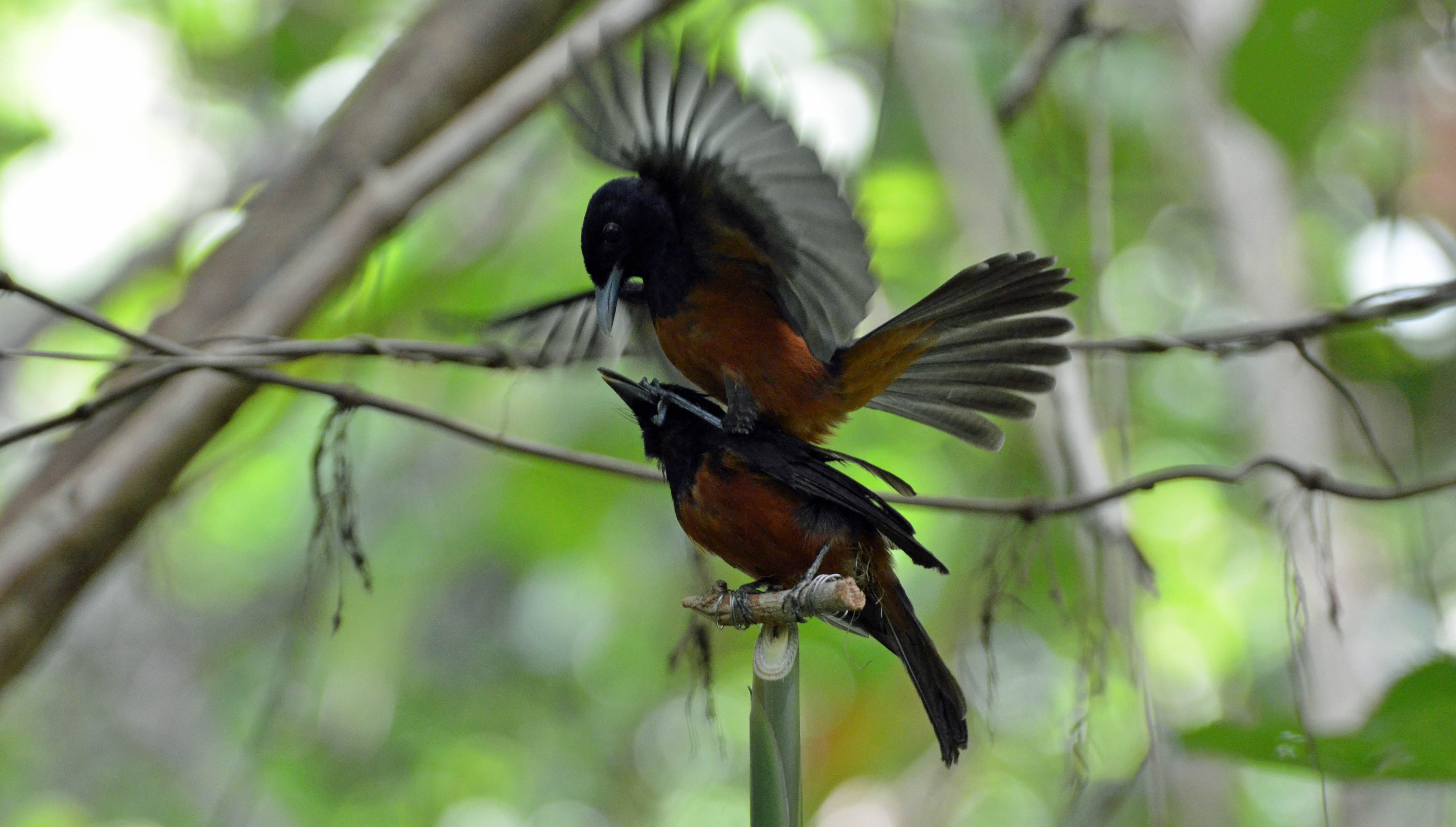
| |
| Home |
| Research |
| Publications |
| People |
| Teaching |
| Field Course |
| Conservation |
| Outreach |
| Adventures |
| Opportunities for students |
| Contact |
RESEARCH PROGRAM |
| MULTIMODAL SIGNAL DIVERGENCE & SPECIATION IN ISLAND FLYCATCHERS |
| Because islands are characterized by rich patterns of endemism and striking intraspecific variation, island systems have featured prominently in our understanding of many evolutionary and ecological processes. Populations of the Monarcha castaneiventris flycatcher have diverged in song, plumage color, and extent of sexual dichromatism throughout the Solomon Islands (see header above). The nominate subspecies has a chestnut belly and iridescent blue-black upper parts, and is sexually monochromatic. Two other subspecies have either a white crest or white lores, and both are sexually dichromatic. Finally, a fourth subspecies is completely iridescent blue-black and, like the nominate form, is sexually monochromatic. Using this classic case of island speciation (Mayr 1942) and a combination of field observations/experiments, and genomic and developmental biology approaches, we are attempting to understand the genetic and ecological factors that drive color and song diversification, and how these changes, in turn, contribute to reproductive isolation. |
 |
| A territorial flycatcher (Monarcha castaneiventris megarhynchus) aggressively responding to a taxidermy mount during our mount presentation experiment. We used mount presentation and song playback experiments to test if divergent plumage color and song are used in species recognition between sister taxa (described in Uy et al. 2009; Uy & Safran 2013). |
| See some of the press we've received for our work in the Solomon Islands: |
| Science Now |
| The Scientist |
| Audubon article featuring our work. |
| Link to the documentary on our work, available to strem on Paramount Plus: Islands of Creation |
| See the trailer : "Islands of Creation" by Day's Edge Productions |
| Back to Current Research Page |
| Back to Uy Lab Home |
|